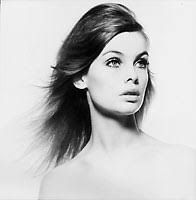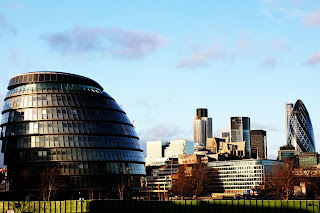DPP 3 - Exercise: Black and White
Choose a subject, lighting condition or picture situation that you think will look better in black and white than in regular colour.
This image was taken at Havre de Pas - its the only pier structure on the Island and it leads out to an outdoor swimming pool.
It was a fairly miserable day with lots of heavy cloud, I took this image with the intention on converting it purely as I thought this would look much better as a black and white image. Some images are more suitable for black and white photography and I believe the structure of this pier walkway to be a good candidate. I think also had I got the chance to return during the evening this would have made a great composition with the lights of the pier on.
So here goes the conversion.
A few simple adjustments were made to this image, first of all I converted it to black and white and then made a few more adjustments in curves and a slight crop to finish.
To me the image still feels like there is something missing so I returned to photoshop and added a layer some hard light and this is the effect now.
I like this version, the sky looks stormy and moody and the walk way leads you into the frame. I am pleased with the results of this image and definately believe it to look better as a black and white image rather than colour.
A couple of other practices, a fast flowing river in Tollymore Forest Park, N.Ireland
Original Image
Black and White
Indoor studio image
Mother and child - I think the black and white version of this which has had a layer added and blending mode soft light - a much more striking image than the colour version.
Research:
Digital cameras brought a whole new meaning to photography, with sophisticated cameras, excellent megapixels and advanced onboard technology, yet today we still shoot black and white images. It is common practice in the modern day world to shoot in colour and then convert to black and white at a later stage, even the digital dark room has become so much more advanced. Not all shots work in black and white, and that is the great advantage of shooting in colour - this way you can play around and see what works best for the particular image, however it is best to shoot in Raw to capture the most data that you possibly can. High colour images ie: images with lots of different colours (hues) dont lend well to conversion to black and white.
Black and white means different things to different people. It can be moody, dramatic and atmospheric and a classic image that will never age.
Subjects that look excellent in mono include: the new smooth skin of a baby, the age old skin of an older person as the wrinkles create fantastic areas for light and shadow, landscapes can also look great, heavy blanket cloud can appear fab in black and white images giving it a moody feel. Also fine art nude photographers shoot in black and white as it gives an elegant feel to the image.
Other Photographers work
Jonathan Olley a British Photographer, who intended to study fine art and then developed a keen interest in War. Photo Esseys included: Berlin Wall and the Velvet Revolution in
Czechoslovakia for the UK press.
I particularly like this image of an Northern Ireland street taken by Jonathan Olley 1998, many people will take different ideas away from this image, including fear, desolation and protection, it is moody and dramatic and shows what life was like back in the late 1990's in Northern Ireland with the heavily guarded Police Station.
Edward Weston was a 20th century American Photographer. He has been called "one of the most innovative and influential American photographer and "one of the masters of 20th century photography. He mainly studied, Landscapes, still lifes and nude portraits.
Whilst leafing through "The Photograph" this image caught my eye, obviously black and white, but striking too the pose that the model has adopted - I like this image, its simple and discret!
David Bailey (British Photographer) was regarded as one of the best British Photographers there was. He was prodominately a fashion photographer working for Vogue Magazine, he was self taught as he suffered from Dyslexia and Dyspraxia and left school at 15, he had various jobs and saved for his first camera, which he bought when he was approximately 20 years old he worked as a studio boy before get got his first photography job.

[online images] assessed on 18/10/2012 David Bailey
Tom Stoddart one of Britains most talented photojournalists was in his mid 40's when he self funded a trip to Sudan to cover the 1998 Famine. He had already covered conflicts including Beirut, the Romanian Revolution, the fall of the Berlin Wall and the Iraq War.
In the history of photography there have been many times when images have helped to change the world by shocking people into taking direct action. One notable recent example is Tom Stoddart’s harrowing image of a starving child, photographed during the Sudanese famine of 1998.
[online images] accessed on 18/10/2101 initially viewed in Context and Narrative (Maria Short)
Another image that caught my eye a striking image of poverty and famine - a powerful image in itself for many reasons, a poor child shedding tears whilst being fed by an Aid Worker during the 1998 Famine.
Very powerful images that shocked the world!








































+edited+wb.jpg)

+edit.jpg)

+edit.jpg)